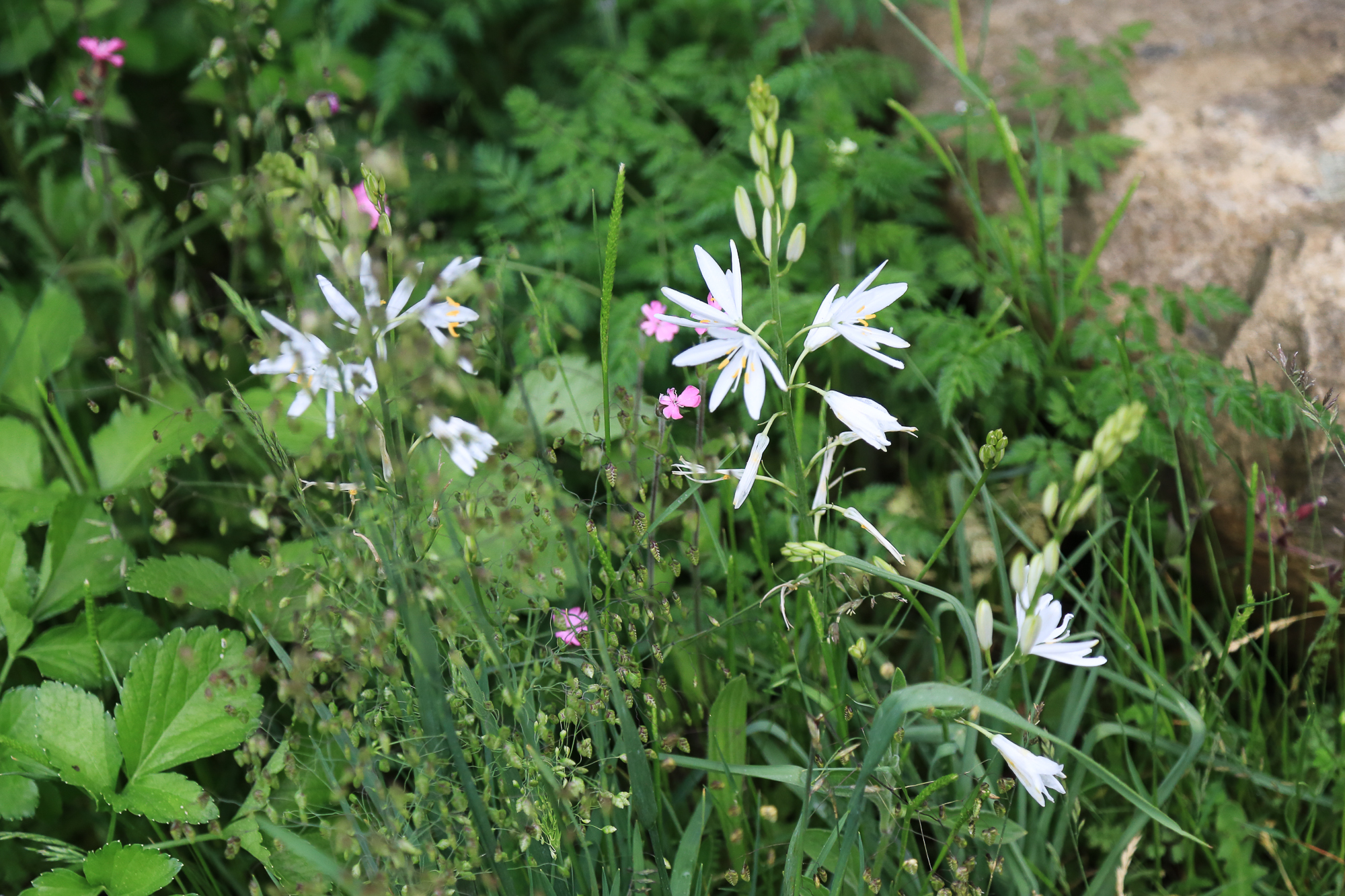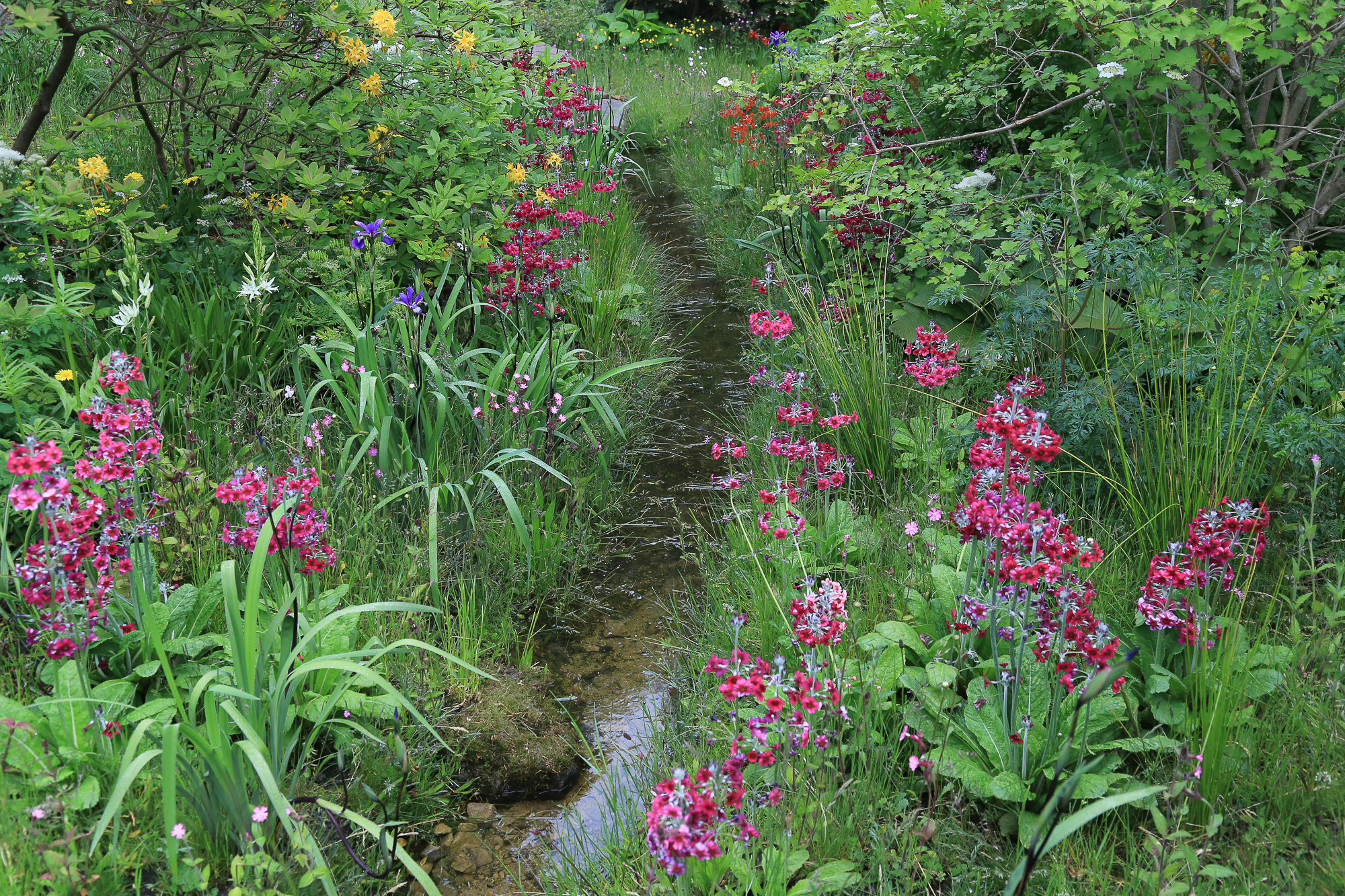Creating nature ... at the Chelsea Flower Show

(I visited the Chelsea Flower Show for the first time in 2015, as a member of Carolyn Mullet's Chelsea Garden Tour, given by CarexTours. Carolyn is now offering a special price on this year's tour, but the offer expires March 15th. You can check it out here. This year's line up of gardens looks really exciting. I've been on two of Carolyn's tours and I recommend them highly.)It may have been with intentional irony that Dan Pearson chose the most problematic site at Chelsea for his 2015 Chatsworth garden--a roughly triangular plot surrounded on all sides by broad, paved walkways and completely open to its surroundings. The image above shows the garden as I first saw it, in the midst of a moving crowd. There was so much visual distraction, at first I couldn't see it. That is ...... until I got up close.Quite a debate was sparked by Dan's Chatsworth garden at the time. Media coverage focused on the the actual transport of a piece of the Chatsworth estate's landscape, including trees and huge boulders, from the north of England to London. (This hyped media story "had legs," at least in the British media.) Some said this wasn't a garden at all, that it was simply a natural piece of landscape moved to a new and novel place. Others said it certainly was a garden, not just a page torn from nature. In fact, it was both, and it was most definitely a designed garden.In recently re-reading Planting in a Post-Wild World by Thomas Rainer and Claudia West, I came across this passage, which set me thinking about Dan Pearson's garden again:"The irony of creating plantings that evince a sense of nature is that it requires a high degree of artifice. Literally transposing thirty square meters of a forest into an urban courtyard may not create the feeling of a forest at all ... Exaggeration is at the heart of this process. Natural landscapes have impact because of their massive scale and the repetition of key patterns and processes over hundreds of acres. By comparison, our urban and suburban sites lack the size and context of their wild counterparts. In the wild, all of the details— sky, rock, soil, water, and plant— work together to create a rich sense of place. In contrast, buildings, roads, and cars often surround our designed landscapes. Our towns and cities are visually complex. In fact, our gardens are more likely to be surrounded by streetlights and power lines than waterfalls or boulder outcroppings. So in order to immerse a visitor in the feeling of a forest or grassland, we have to turn up the volume, creating designed plantings even more intense than their natural counterparts." *So in this "visually complex" site full of crowds and movement and distraction, I found perhaps one of the most peaceful gardens ever made. Once I focused my attention on the details of the garden, though the crowd didn't fade away, I felt I was a participant in another world. Dan is noted for his sensitivity to sense of place, and here, in the turmoil of a busy day at Chelsea, his garden existed as a separate place, "creating designed plantings even more intense than their natural counterparts."Dan created pools of water, silent streams, miniature vignettes that, though they look entirely natural, combined plants from at least three continents. The plant selections were most definitely "exaggerated" in the sense that they intensified the experience of Chatsworth's "nature." Below, at left a Mahonia, a native of North America ('Soft Caress" I believe) and at right a delicate Disporum, a native of China.One might call this a garden of extreme artfulness, or exaggerated subtlety (irony abounds). Specially planted wildflower turf was grown on a thin substrate, brought to the site, and carefully adhered to the natural rocks. Below you can see the edge of the wildflower turf exposed slightly by the beating rain on the day I visited.And here, American camassias with native British plants.Creation of this artificial stream took great skill and knowledge.This intriguing walkway, which goes nowhere, evokes many associations with the British past (some religious, some cultural).I've read that some wept seeing this garden.I was trying to take photos in the rain, with crowds buffeting against me; conditions could have been better.If you want to see some fabulous images, just look at the main page of the Dan Pearson Studio website, where you will see a selection of full-screen images (without the crowds).Of course the garden won "Best in Show." *Rainer, Thomas; West, Claudia (2016-02-04). Planting in a Post-Wild World: Designing Plant Communities for Resilient Landscapes (p. 146). Timber Press. Kindle Edition.











